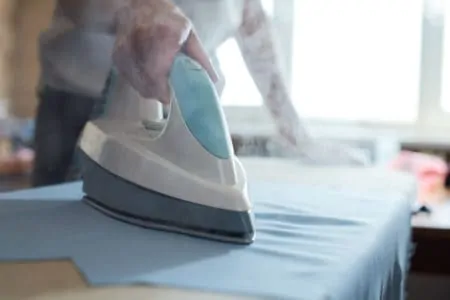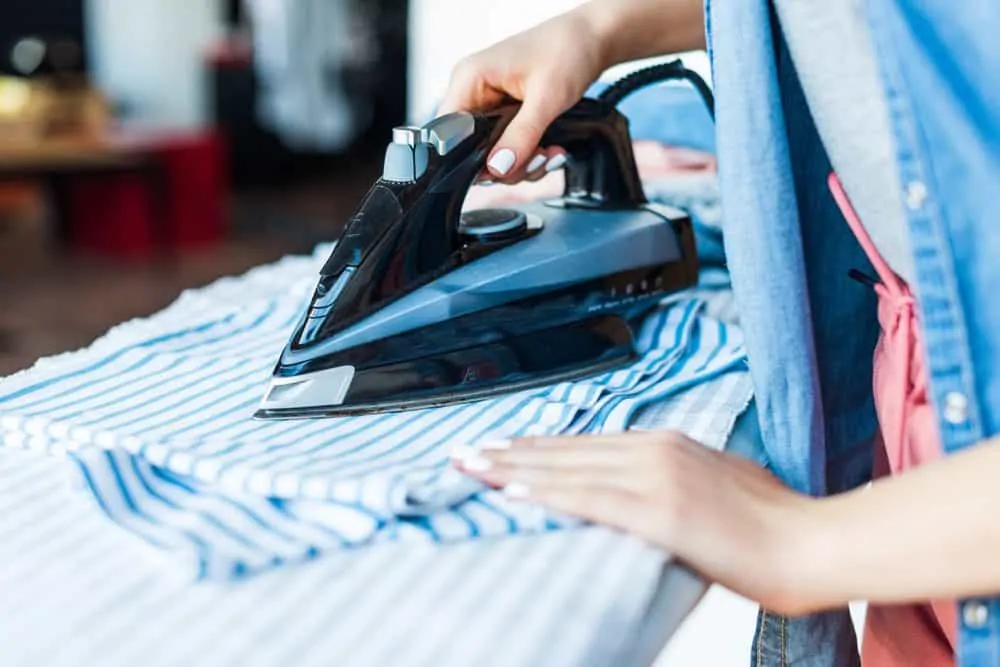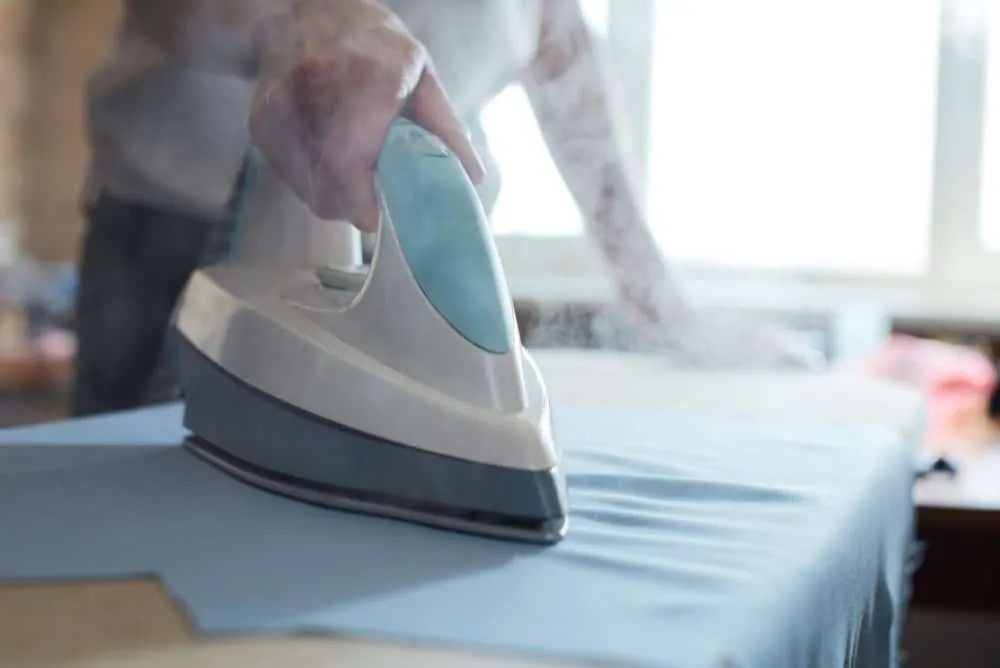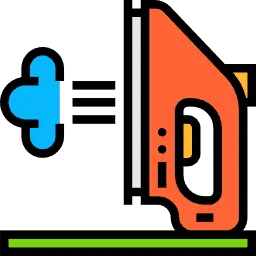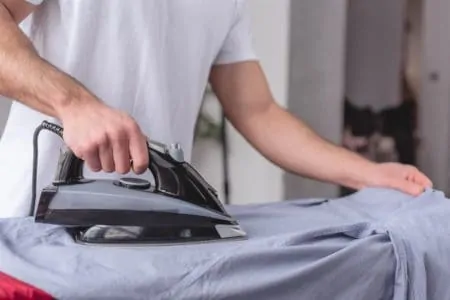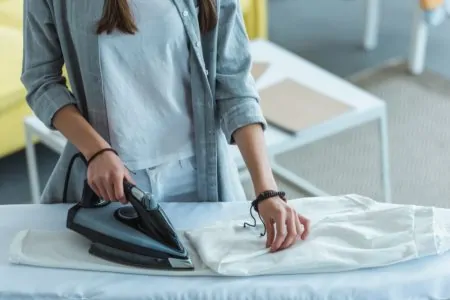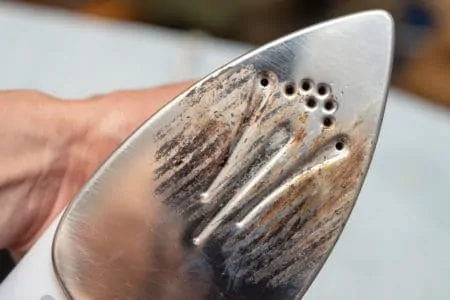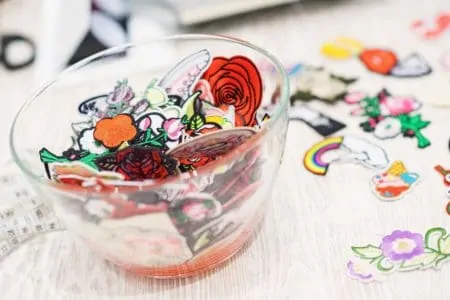You want to look your best, right? For dates, interviews, parties and meetings. The best way to ensure crisp and sharp clothes is to iron them. But when you’re in the market for an iron, you might notice you’re overwhelmed with choices.
A big one is how to choose between a dry iron vs a steam iron. In the world of irons, it’s important to choose the best one for your needs. In this article, we’ll discuss the differences, pros and cons of both a dry iron and a steam iron.
Key Takeaways
- Dry irons are simple to use, budget-friendly, and easy to clean, but lack steam functions for stubborn wrinkles.
- Steam irons are versatile and effective at removing wrinkles, but can be heavier, require more energy, and harder to clean.
- Steam irons can double as dry irons by turning off the steam function and emptying the water tank.
- When choosing an iron, consider your needs, fabric types you usually iron, and how frequently you use the iron.
Dry vs Steam Iron
You’re probably wondering what the differences are between a steam iron vs a dry iron. We cover the important basis when it comes to these ironing tools.
Water Tank
The first big difference is the water tank. A steam iron has one so that it can produce steam. Meanwhile, a dry iron obviously does not have a water tank.
Because of this, dry irons don’t leak, spray or spit water onto your clothes. If you want to avoid that, then a dry iron would be a better choice.
On the other hand, having a water tank allows a steam iron to emit proper steam. This allows for easy and effective ironing. Steam is great for removing stubborn wrinkles!
Steam Output and Steam Holes
Steam irons have a steam output and steam holes. Some have a steam output made up of hundreds of tiny holes which gives out a great amount of steam. This allows you to have wrinkle-free clothes that don’t need to be reironed often.
Dry irons do not have steam holes. The soleplate will be flat and smooth. This is a good choice of iron if you’re into arts and crafts that require ironing.
If you choose a steam iron, make sure the holes aren’t blocked. That way, you get the correct amount of steam for your clothes.
Spray Mist
A good steam iron will come with an option to spray mist. Sounds fun, right? Well, it is. This function lets you dampen the clothes so that it’s easier to iron out wrinkles.
If you use a dry iron, you won’t have this option. You have to use some elbow grease to really press in to stubborn wrinkles. Of courses, you can use a spray bottle to dampen clothes first. It’s a little old fashioned, but it works.
The Soleplate
We’ve mentioned some differences to the soleplate. For example, a dry iron will have a flat soleplate. This makes it a breeze to clean!
A steam iron has lots of steam holes for the steam to get released. This does require some more hassle when it comes to cleaning, as you’ll need to work on each individual hole in case they get blocked up.
Versatility
A great feature of the steam iron is that it can double up as a dry iron. You don’t always need to use the steam function. If you keep the tank empty, you’ve got yourself a dry iron!
It’s important to empty the water tank on occasion anyway. Some clothes, such as satin and silk, require dry ironing.
Unfortunately, a dry iron can never double up as a steam iron. They’re not as versatile as the steam iron. If you want something that has extra features, a steam iron is a top choice.
Frequency of Usage
Finally, it’s helpful to think about how often you iron. If you iron often, then a steam iron is a great purchase. With the versatility of this iron, you can change the settings to work on most types of clothings. You can even use the steam setting for upholstery and furniture.
It’s also easier to iron a bunch of clothes at once with the steam iron. They are more efficient and once you get the hang of it, easy to use!
Should You Buy a Dry or Steam Iron?
When deciding between a dry vs steam iron, you should know the pros and cons. Plus, which iron is best for specific fabrics? We’ve got the answers.
Dry Iron
Here are the pros and cons of the dry iron.
Pros
- You can iron most, if not all, fabrics with a dry iron.
- Easy to clean and maintain.
- Budget-friendly.
- They last long.
- They don’t leave marks on clothes.
Cons
- No steam or spray function.
- Not as effective on stubborn wrinkles.
- No extra features, besides temperature control.
Steam Iron
When it comes to steam ironing, there are also pros and cons.
Pros
- Effective crease removal.
- Steam and spray option.
- Vertical ironing is an option.
- You can use on furniture, curtains and upholstery.
- Doubles as a dry iron.
- Quickly and easily remove wrinkles.
Cons
- Heavy.
- Requires more energy.
- They can leave marks on clothes.
- Doesn’t work with every fabric.
- More difficult to clean.
- They can leak.
Fabric Table
We’ve also made a super useful table to help you know which iron to use on different fabrics.
| Dry Iron | Steam Iron | |
| Wool (cashmere, flannel) | Polyester | Cotton (denim, muslin, etc.) |
| Embroidery and lace | Nylon | Corduroy |
| Silk | Acetate | Velvet |
| Rayon | Acrylic | Linen |
| Satin | ||
Be Careful
Using a Steam Iron as a Dry Iron
By now, you know that a steam iron is a versatile little gadget and can double as a dry iron. We’ll give you some tips on how to use the steam iron as a dry iron.
You need to turn off the steam function and empty the water tank to use a steam iron as a dry iron. It’s best to do this when ironing fabrics like polyester, rayon or silk since they can’t be steam ironed. You don’t want to ruin your favorite clothes!
It depends what you need the iron for, but choosing a steam option means you get the best of both worlds. However, if you’re looking for a cheaper option, the dry iron will do the trick. Dry irons are also better for certain projects, like heat transfer.
FAQs
If you’re considering buying either option, it’s sensible to wonder about any cool features they may possess. We’ll answer some important questions for you before you decide to buy either a dry or steam iron.
Decision Time
Now that you know the main differences between a dry iron vs a steam iron, it’s decision time.
In summary, a dry iron is great for most fabrics. They work great with delicates like satin, silk and wool. They’re easy to clean and don’t leave marks on clothes. However, they’re not as effective on stubborn wrinkles, nor do they have extra features for versatility.
You can always opt for a steam iron to get the best out of both irons, since it doubles as a dry iron. The steam and spray button helps with getting out wrinkles. You can also use on furniture, curtains and upholstery. The drawbacks include difficulty cleaning, leaving marks on clothes, and leaking.
With these tips, you’ll find the right iron for you.
